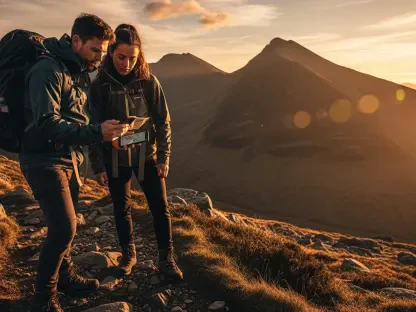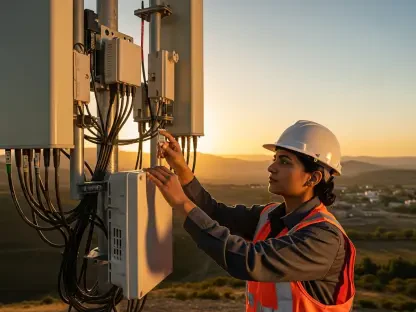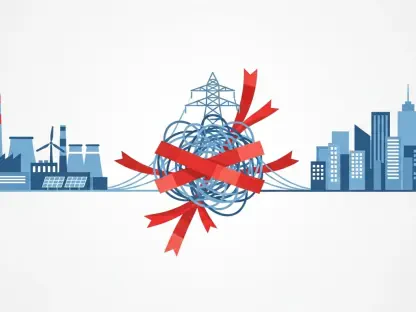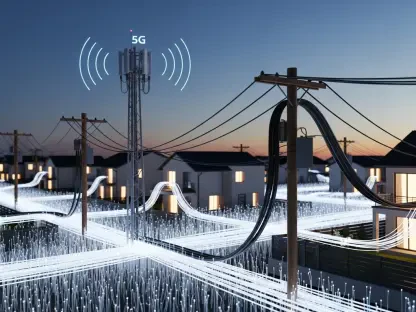I’m thrilled to sit down with Vladislav Zaimov, a seasoned telecommunications specialist with deep expertise in enterprise telecommunications and risk management of vulnerable networks. Today, we’re diving into the groundbreaking network sharing initiative by VodafoneThree in the UK, which promises to transform connectivity for millions. Our conversation will explore the mechanics of this joint network access, the impressive speed and coverage improvements for customers, the ambitious rollout of 5G, and the challenges of bridging coverage gaps in remote areas. Let’s get started!
Can you walk us through the core idea behind VodafoneThree’s network sharing initiative and what it means for customers?
Absolutely, Diane. The VodafoneThree initiative is about combining the network resources of Vodafone and Three to create a seamless experience for their customers. By sharing infrastructure and spectrum, they’ve enabled joint access at over 600 sites already, with plans to scale up significantly. For customers, this means better coverage, faster speeds, and fewer dead zones, as the combined network is much more robust than what either company could offer alone. It’s a game-changer for connectivity across the UK.
How does the technology, like the multi-operator core network, make this integration possible?
The multi-operator core network is the backbone of this integration. It allows both Vodafone and Three to operate on a unified platform while maintaining their individual customer bases and services. Essentially, it’s a sophisticated system that routes traffic efficiently between the two networks, ensuring that users can access the best available signal, whether it’s from a Vodafone or Three site. This tech minimizes redundancy and maximizes resource use, which is critical for scaling up to thousands of shared sites.
When it comes to selecting the initial 600 shared network sites, what factors guided those decisions?
The selection process focused on areas with high demand and existing coverage challenges. Think urban centers with heavy traffic or suburban regions where one network might be stronger than the other. The goal was to balance customer needs with logistical feasibility—ensuring the sites could be integrated quickly and effectively. It’s about delivering immediate impact while laying the groundwork for broader expansion.
Speaking of expansion, how do you plan to ramp up to 9,000 sites within the first year?
Scaling to 9,000 sites is ambitious but achievable with a clear strategy. It involves prioritizing regions based on population density and coverage gaps, while also leveraging existing infrastructure to speed up deployment. There’s a heavy focus on coordination between teams to upgrade sites efficiently, alongside investments in new equipment. The timeline is tight, so it’s all about phased rollouts—tackling a few hundred sites at a time while continuously monitoring performance.
Let’s talk about the speed boosts. How did you achieve a 20% average improvement in 4G speeds for over 7 million customers, with some areas seeing up to 40%?
The speed improvements come down to spectrum integration. By combining the frequency bands that Vodafone and Three each held, we’ve effectively widened the data highway. More spectrum means more capacity for users, which translates to faster downloads and smoother streaming. In areas with up to 40% boosts, you’re often seeing the benefit of overlapping coverage, where the combined signal strength just turbocharges performance.
Coverage gaps are a big focus, with plans to eliminate 4G ‘not spots’ over 16,500 square kilometers. How are you pinpointing these underserved areas?
Identifying ‘not spots’ involves a mix of data analysis and customer feedback. We map out signal strength across the UK using network performance tools, then cross-reference that with reports from users who experience dropped calls or no service. Rural and remote areas often stand out in these analyses, as do places with tricky terrain like valleys or dense forests. It’s a meticulous process, but it ensures we’re targeting the right spots for maximum impact.
What kind of challenges do you foresee in bringing reliable coverage to these remote locations?
Remote areas present a host of challenges, from physical barriers like mountains or lack of power infrastructure to regulatory hurdles for installing new towers. The cost of deployment is also higher because you’re often starting from scratch with limited access roads or existing facilities. Then there’s the issue of maintaining equipment in harsh weather conditions. It’s a complex puzzle, but we’re tackling it with innovative solutions like portable masts and partnerships with local authorities.
Shifting gears to 5G, you’ve set a goal to reach 71% of the UK population by the end of the first year. Can you share the key steps to make this a reality?
Reaching 71% coverage with 5G is a massive undertaking. It starts with upgrading existing sites to support 5G technology, focusing on densely populated areas first to capture the largest user base. We’re also deploying new small cells in urban environments to boost capacity. The £11 billion investment over the next decade plays a huge role here, funding the hardware, software, and manpower needed to roll this out at pace. It’s about building a future-proof network, not just a quick fix.
With a £1.3 billion capital expenditure in the first year for 5G Standalone deployment, can you break down where that money is going?
Sure, that £1.3 billion is being allocated across several key areas. A big chunk goes to new 5G equipment, like advanced antennas and base stations that support Standalone architecture. Then there’s the cost of upgrading core network systems to handle 5G traffic independently of 4G. We’re also investing in testing and optimization to ensure reliability. Lastly, a portion covers training for staff and collaboration with vendors to deploy this tech efficiently. It’s a comprehensive spend to kickstart a next-gen network.
Looking ahead, what’s your forecast for the future of 5G coverage and adoption in the UK beyond this first year?
I’m optimistic about 5G’s trajectory in the UK. Beyond the first year, I expect we’ll see coverage push past 71% as we tackle harder-to-reach areas with innovative solutions like satellite backhaul or drone-assisted deployments. Adoption will skyrocket as more devices become 5G-compatible and industries—think healthcare, manufacturing, and transport—start leveraging its low latency and high bandwidth for transformative applications. We’re on the cusp of a connectivity revolution, and the next few years will be exciting to watch.









